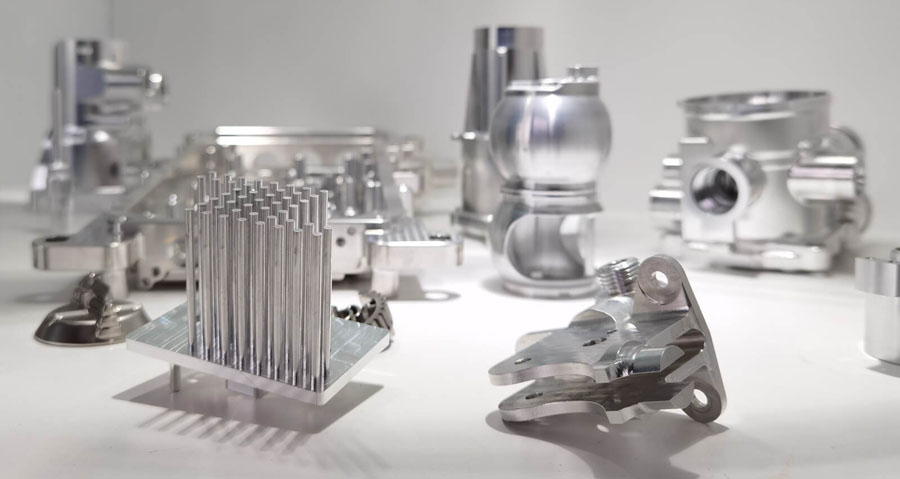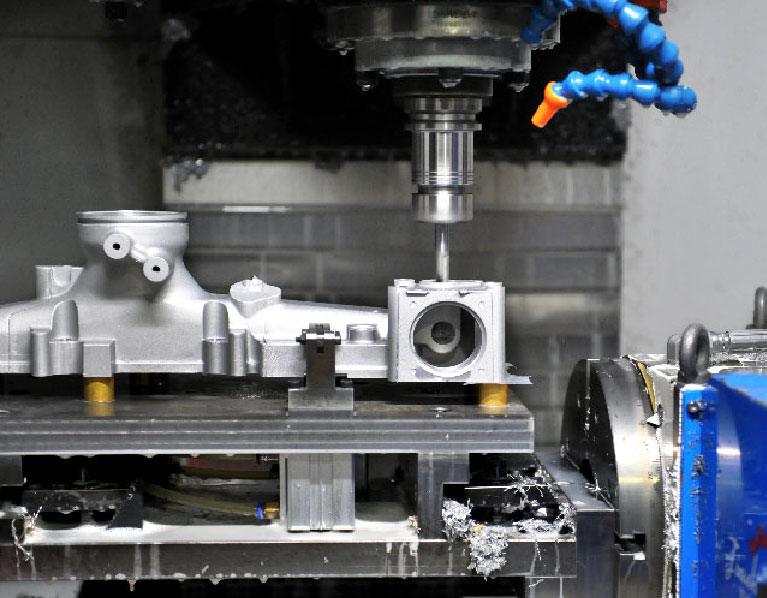The ideal physical properties and excellent workability of aluminum make it one of the most popular metal choices for product designers. However, even if you have designed aluminum parts or parts, you don’t want to keep making these parts without building a prototype.
Aluminum is the most commonly used material in prototype production. Industries ranging from aerospace, medical and automotive industries require durable machinery and structural components. The aluminum prototype is strong, has excellent welding capabilities, and is corrosion-resistant, so it is essential in manufacturing operations.
Manufacturers use different techniques to make aluminum prototypes. Depending on the part, quantity or geometry, they can choose to use 3D printing, CNC machining, aluminum casting service.
Each of these methods has its advantages and disadvantages. The wrong choice can lead to high tool and manufacturing costs, non-functional and unusable parts.
This article introduces the commonly used aluminum prototyping methods, hoping to better help you understand which method is best for your prototyping project.
What Is Aluminum Prototype Manufacturing?
Aluminum prototype manufacturing is a rapid manufacturing process from aluminum blocks. This process involves different technologies and different machines to come up with the best possible design.
Manufacturers and designers try to launch their final products in the shortest possible time. This is done to save time and cost. Therefore, a sample was made that was very close to the original product.
Aluminum products are in great demand and have many applications in different industries. Before producing high-budget products, aluminum prototype manufacturers build prototypes that help refine the design.

Different Forms Of Aluminum Prototypes
Method #1: CNC Machining
Customized processing based on design files
CNC machining is one of the most common machining methods used to create aluminum prototypes. This machining process relies on computer input to precisely control the machining tool to remove parts of the aluminum workpiece and leave the required parts. In addition, as a subtractive manufacturing method, it will lead to material waste. But what makes the CNC machining process unique, and when should you use it?
CNC machining provides good quality, excellent surface finish, repeatability, and is compatible with a variety of aluminum alloys. more importantly? Since the CNC machining process starts with the creation of a 3D CAD model, you can quickly change the design between prototypes without affecting the lead time.
CNC machining is particularly suitable for testing and producing prototypes. Using 4-axis and 5-axis CNC milling machines, you can create complex prototypes that are difficult to handle with other machining methods.
Method #2: 3D Printing
3D printing is another popular way to create aluminum prototypes, using additive manufacturing techniques to reduce waste. Direct metal laser sintering (DMLS) technology can be used to make 3D printed aluminum prototypes. Here, a high-power laser is used to sinter the powdered aluminum particles layer by layer to form the desired shape.
Like the CNC machining process, 3D printing relies on 3D CAD models to accurately create aluminum prototypes. Its minimum feature size ranges between 0.25 mm and 0.8 mm, allowing the manufacture of complex geometries with complex internal cross-sections. However, 3D printed aluminum prototypes are not cheap and usually require additional surface treatment.
3D printing to create aluminum prototypes is usually more expensive than CNC machining. Therefore, 3D printing is more suitable for manufacturing small parts, especially test versions and production prototypes.
Method #3: Investment Casting
Investment casting, also known as precision casting, is a centuries-old casting process used to make aluminum prototypes. Here, aluminum parts are made by pouring molten aluminum into molds made by wax models. Since it requires specialized equipment, the process of making molds is expensive. Therefore, it is not economically feasible to make a mold for one or two prototypes, and it is more suitable for mass production.
Investment casting provides excellent surface finish, strict dimensional tolerances, and is compatible with a variety of aluminum alloys. In addition, the material waste of investment casting is lower than that of CNC machining. The only disadvantage of this process is its size limitation. If you are making bulky aluminum parts, this may not be your best choice.

Advantages Of Aluminum Prototypes
Depending on the part, its function and strength requirements, different materials can be used to make prototypes. However, aluminum is preferred for aesthetic and functional reasons. Here are some of the benefits of choosing aluminum prototypes.
Excellent Functional Performance
Although some prototypes have no mechanical or functional effects, other prototypes must be used. Pre-production, hybrid, and functional prototypes can work; therefore, good quality and strength are required. Aluminum has become the metal of choice because of its excellent properties.
Higher Heat Resistance
If you compare it to cheaper options such as plastic, the aluminum prototype is more resistant to extreme temperatures. Therefore, it will be less prone to degradation during the production process.
Better Aesthetics
Whether you use 3D printing or CNC machining technology, metal prototypes look better. In addition, they are more attractive than plastic parts even as non-functional prototypes.
Cost-effective
Compared with plastic parts, aluminum prototypes and parts made of metal are much cheaper. This is because the physical properties of metal reduce the frequency of parts replacement. In the long run, this will reduce production costs.
Test Accuracy
Prototypes made by CNC machining and other processes have high accuracy. In addition, aluminum alloys have excellent quality and can produce parts for testing in the market.
More Suitable For Mass Production
Once the engineer has made the aluminum prototype, the customer can use it for production. It is easier to turn a metal prototype into a finished product. However, if the prototype is made of plastic, it cannot be converted to metal in mass production.
Super Strength
Aluminum alloy has high strength, good corrosion resistance and good plasticity. Because of these excellent characteristics, they are widely used in most industries. For example, in the aviation industry, aluminum parts are widely used. Due to this advantage, customers can rest assured to obtain high-quality parts and prototypes.
Summary
Rapid prototyping is not made in an ideal form. They need processing and finishing to get the correct end result. The one-stop shop in China provides all these services from design to surface treatment technology. The generated prototype undergoes CNC milling, CNC turning, polishing, anodizing, etc. to achieve a perfect prototype. With these services, industrial users do not have to take their prototypes to any other place.
As an ISO9001 certified precision machining company with more than 10 years of experience, we are good at CNC metal machining services like CNC milling, Turning, Grinding, EDM and Wire EDM. I believe we can do something for you. If you are looking for a prototype company to complete your design, please feel free to contact us.


